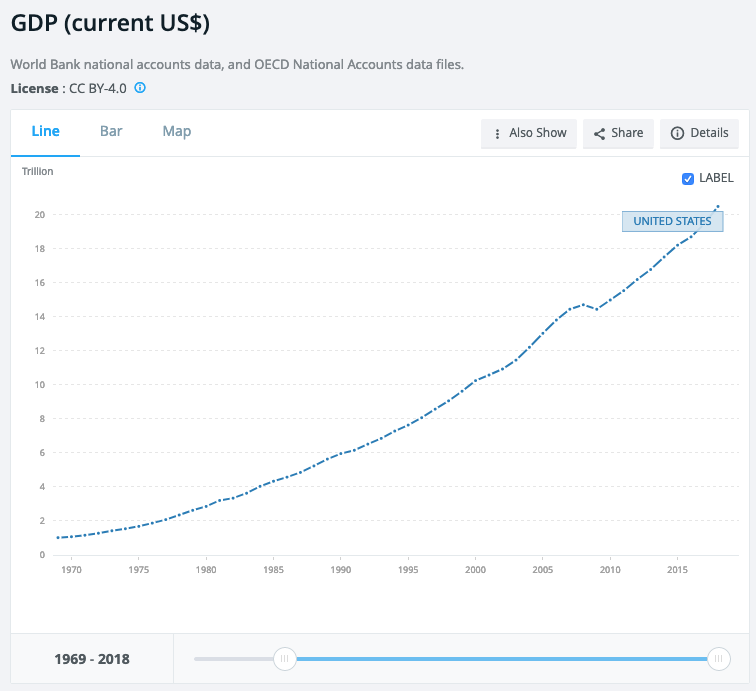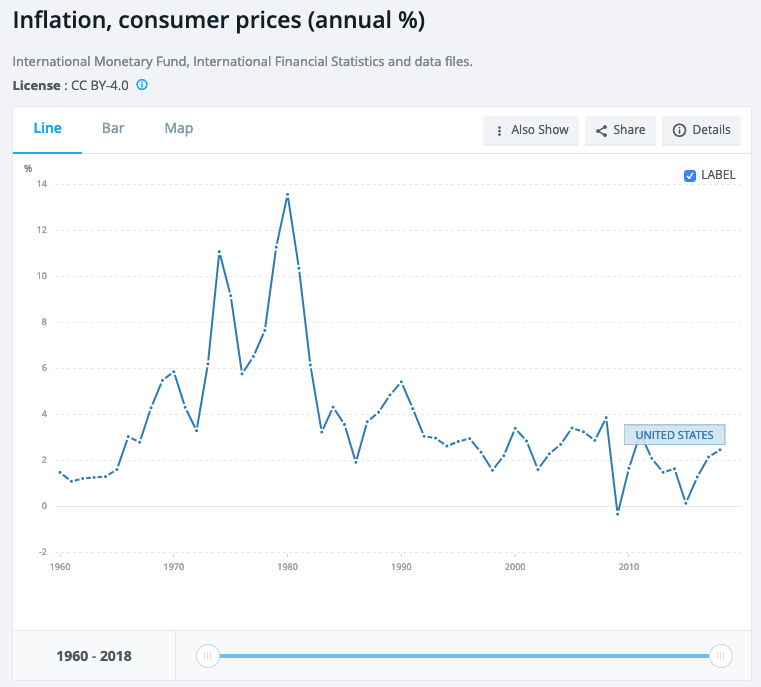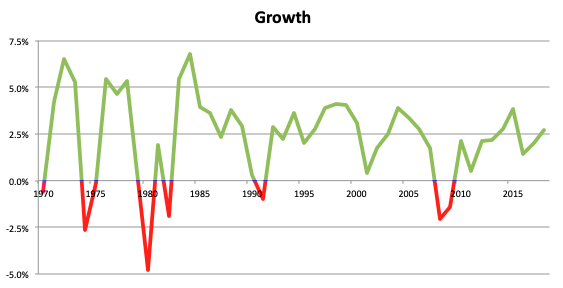This year I turned 50 and and with that half century milestone, I’ve been looking back quite a bit more than normal this year. Case in point, in my recent post on the $80 trillion world economy, I pointed out there that the U.S. economy is one quarter of the total, or $20 trillion.
50 years ago, back in 1969, the U.S. economy was only $1 trillion (World Bank, reported in non-inflationary, 2018 dollars). So that’s the same size as India today, but with only 200 million citizens (U.S. Census).
So in my lifetime the U.S. economy has grown 20x while the population has grown 50%.
That’s a lot of growth. Especially so given this is after the big post-War economic boom, after most of the interstate highway system had been built, most of the enormous cost of the moon landing paid for, already well into suburbanization and the early days of the Information Age.

When plotted on a graph, it looks rather steady. Except for the Panic of 2008/2009, it looks like a steady upward climb. But statistics often lie and this lie is caused by combining actual growth with annual inflation. The same World Bank database has the annual inflation rate.

The 1970’s and 1980’s were not a happy economic time in the U.S. (or most of the major economies), with annual inflation spiking above 10%. But even with that, GDP shrunk in only 7 of the last 50 years.

Taking the actual inflation into account, 7x of the heading 20x growth was due to inflation and that the economy itself grew just 3x. The average annual growth rate was just 2.5%. Given that, why do the economists and pundits and politicians keep talking about 2.5% being “sluggish” when it’s in fact normal?
What worries me more is what happens over the next 50 years. I’ve talked quite a bit publicly about economic growth in Africa. That is inevitable. But there is little change the U.S. economy will continue growing at this rate through 2069. There simply is unlikely to be infrastructure at the scale of the interstate highways and suburbs to build out this century.
Economists too often simply project the future from the past. Taking 2.5% per year (with no recessions) will grow the economy to $77 trillion (measured in 2018 dollars), just shy of today’s global GDP. The U.S. would have to add all the manufacturing capacity of China, Germany, and Japan to do that, along with all the resource extraction of Saudi Arabia, Russia, Norway, and Canada. The only way I see that happening is a moon base and asteroid mining, but would that count as U.S. GDP if it’s off planet?
In any case, if we drop to 1.35% annual growth, GDP will double to $40 trillion by 2069. Given the expected population growth, that seems possible. But the how long until the press, pundits, and politicians call 2.5% growth “overheated?”














